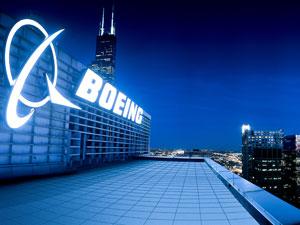Boeing Makes Moves On Airbus A321XLR Competitor Plan | ボーイング社、エアバスA321XLRの競合機開発に向け動き出す

ボーイング社はエアバスA321XLRに対抗するための完全新型機の開発に向け、最初のステップを踏み始めた。資金繰りや難しいマーケット環境といった困難に直面している中でも、サプライヤーに対して暫定的な情報提供の依頼を始めている。
-5Xと呼ばれているボーイング社の新型機の研究は、一旦白紙化された次期中型機(NMA)プロジェクトから派生したものと思われ、250〜275席規模で2クラスのワイドボディ機となっている。757-200/300の後継機になり得るこの機体は、9,000km程度の航続距離を持ち、2020年代後半の就航を目指している。
業界関係者によると、このプログラムはシンプルな設計と低コストを重視している。開発費および開発期間を最小化するため、既存の構造・システム・推進技術を最大限に活用する方針で、その多くはNMAで研究されてきたものだ。ボーイング社は具体的な内容についてはコメントしておらず、1月27日にこの新型機の研究を示唆した同社 CEO・Dave Calhoun氏の発言に「付け加えることは何もない」としている。
同氏は2020年第4四半期の決算説明会で、A321規模の競合機は「次に開発資源を投下する先としてふさわしい。エンジニアリングや製造技術の開発は順調に進んでおり、しっかり差別化された製品を提供するべきタイミングが来たときには、準備が済んでいるだろう。つまり、これは様々な推測を積み上げて完成形を想像する、ロケット科学のようなものではないことはたしかだ。しかし、まだその設計について詳細を明らかにするタイミングではない」と述べた。
同氏のコメントは、同社が737MAXの後継機となる次期小型機(NSA)ではなく、中距離機に注力するという、2020年に改訂した開発計画に沿っていくことを再確認するものだ。同社は以前、より野心的で幅広い規模をカバーするNMAファミリーを発表していたが、市場の反応が低調だったため白紙化され、2020年2月にA321XLRのマーケットを狙う意向を示していた。
NMAコンセプトのベース機は757の後継機を想定していたが、後から767の後継機も兼ねるようになった。2019年初頭にはマーケットに投入できる準備が整ったとされ、225席のNMA−6Xと275席のNMA-7X、この2種類のモデルが中心となり、後者の開発が先行する予定だった。しかし、2019年3〜4月に航空会社に対するNMAのオファーについて役員会の承認を得ようとしていたところで、737MAXの2度目の墜落事故が発生、世界規模での運航停止という事態に陥った。
NMAプログラムでは、A321XLRの競合機設計においてもカギとなる要素である、ナローボディ機と同等のコストで生産できる、航続距離9,000kmのワイドボディ機を開発するという点を重視していた。ただし、コロナ危機によりプログラムのタイムラインは完全に変わった。当初のNMA計画では、大型モデル(社内では7K7-7Xと呼ばれていた)の2025年の運航開始を目標としていた。見直された現在の計画では、-5Xの運航開始は2020年代後半を目標としており、開発ゴーサインが出るのは2022〜2023年頃になるだろう。
NMA同様、この機体は複合素材製の胴体と翼で構成され、初期のNMA向けに提案されていた、CFM社またはプラット&ホイットニー社製の推力5万ポンド級の高バイパス比エンジンを搭載すると思われる。就航時期が後倒しされたことで、ロールスロイス社がUltraFanエンジンを用いて再参入する機会を得たと考えることもできる。同社は2019年に、厳しいスケジュールを懸念してNMA搭載エンジンの競争から脱落したが、2020年代後半に認証を受けるというスケジュールであれば、再参入も可能になるかもしれない。最初のUltraFan実証機は組立が始まっており、2022年初頭には運転を開始する予定だ
ボーイング社は2020年に120億ドルという記録的な損失を計上しているが、この新規プログラムに必要な初期の研究開発費は捻出できると業界アナリストは考えている。 Credit Suisse社で航空宇宙防衛分野エクイティリサーチのグローバル責任者を務めるRob Spingarn氏は「これは一度に250億ドルを用意するようなものではなく、年間20〜30億ドル投資すれば済むようなものだ」とAviation Weekに語った。
ボーイング社の資金繰りは737MAXの生産とデリバリーが軌道に乗れば改善し、需要も数年で回復すると同氏は考えている。彼は「どこかの時点でルネサンスが訪れ、そこで次世代機開発に必要なキャッシュフローを生み出すだろう」と話した。
Aviation Week Intelligence Network (AWIN) のメンバーシップにご登録いただくと、開発プログラムやフリートの情報、会社や連絡先データベースへのアクセスが可能になり、新たなビジネスの発見やマーケット動向を把握することができます。貴社向けにカスタマイズされた製品デモをリクエスト。
Boeing is taking the first tentative steps towards an all-new airliner designed to compete with the Airbus A321XLR and, despite the current cost and market headwinds, has begun sounding out suppliers for provisional requests for information.
The new Boeing airliner study, believed to be called the -5X, appears to be an outgrowth of the shelved New Midmarket Airplane (NMA) project and is targeting the 250-275 seat size category in a two-class, twin-aisle configuration. The aircraft, which would effectively be a replacement for the 757-200/300, would likely have a range of up to 5,000 nm and be aimed at entry-into-service in the late 2020s.
According to industry sources the program goals stress design simplicity and low cost. To minimize development investment and time to market, the company aims to maximize the use of existing structures, systems and propulsion technology—much of it already studied for NMA. Boeing declines to comment on the specifics and says it doesn’t “have anything to add” to remarks made on Jan. 27 by company CEO Dave Calhoun—who hinted at continuing studies of such a new aircraft project.
Calhoun, speaking at Boeing’s 2020 fourth-quarter earnings call, said an A321-sized competitor is “pretty much in the right space with respect to where next development efforts lean.” He noted, “we are really progressing well on our engineering and manufacturing technology development so that we’re ready when that moment comes to offer a really differentiated product. So, I’m sure it’s not a lot of rocket science for you to add up and guess where things end up. But we’re not going to call out that point design. This isn’t the moment.”
Calhoun’s comments also reaffirm that Boeing is sticking to its revised 2020 development plan to focus next on the mid-range sector rather than potentially return to a New Small Airplane (NSA) successor to the 737 MAX. The company previously outlined its intent to go after the A321XLR market in February 2020 after lukewarm market response had earlier forced it to shelve plans for the more ambitious, broader ranging NMA family.
The baseline NMA family concept first focused on a 757 replacement and was later expanded to include a successor to the 767. By early 2019 the NMA was considered ready for market and centered on two main versions, the 225-seat NMA-6X and 275-seat NMA-7X, with the larger of the pair expected to be developed first. However, just as Boeing was about to seek board authority to offer the NMA to airlines in March-April 2019, the second 737 MAX accident and subsequent worldwide grounding of the model occurred.
Key NMA program elements which remain germane to the current A321XLR competitor point design include an overriding focus on a twin-aisle design capable of 5,000 nm missions that could be developed for single-aisle production costs. Program timing has, however, completely changed after the COVID-19 pandemic. Under the original NMA plan the larger variant, dubbed internally the 7K7-7X, was provisionally targeted at entry-into-service in 2025. Now the revised plan is thought to be aimed at entry-into-service of the -5X in the late 2020s pending a potential go-ahead in 2022 or 2023.
Like the NMA, the aircraft is expected to incorporate composite wings and fuselage, and use versions of the same higher bypass ratio, 50,000 lb.-thrust class engines competitively proposed for the earlier family by the General Electric-Safran CFM joint venture and by Pratt & Whitney. The extended service entry timetable could also potentially provide an opportunity for Rolls-Royce to re-enter the contest with a version of the UltraFan. The engine maker dropped out of the NMA contest in 2019 citing tight schedule concerns but, with a potential late 2020s certification goal, may be able to re-consider a bid. The first UltraFan demonstrator is entering assembly and is due to run in early 2022.
Despite Boeing posting record losses close to $12 billion in 2020, industry analysts believe the company will be able to sustain the required initial research and development funding for a new program. Rob Spingarn, Credit Suisse’s Global Head of Aerospace/Defense Equity Research, says “it’s not like they need to come up with $25 billion all at once.” Speaking to Aviation Week, Spingarn adds “they could spend $2-3 billion a year.”
Spingarn projects that Boeing’s cash situation will improve as MAX production and deliveries spool up and demand returns in the next couple of years. “There’s going to be a renaissance at some point,” he says. “And that is going to generate cash flow that can fund the next airplane.”